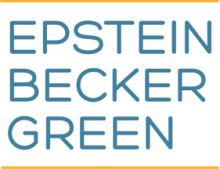Earlier this year, New York State added a new paid prenatal leave benefit to the state’s Paid Sick Leave Law (PSL).
As of January 1, 2025, all New York employers must grant an additional 20 hours of paid prenatal leave, on top of sick leave. To align with the new statewide law, the New York City Department of Consumer and Worker Protection (DCWP) recently amended its Earned Safe and Sick Time Act (ESSTA) rules (the “amended ESSTA Rules”) to address prenatal leave in connection with the City’s enforcement of ESSTA. The amended ESSTA Rules will take effect on July 2, 2025.
New York City employers will have three new obligations arising from the amended ESSTA Rules:
- Prepare and distribute a written paid prenatal leave policy.
- Notify employees of paid prenatal leave use on pay statements during pay periods when paid prenatal leave is used.
- Issue an updated Notice of Employee Rights for new hires and to current employees.
New York State Paid Prenatal Leave
The PSL, set forth at New York Labor Law Section 196-b, defines “paid prenatal personal leave” as “leave taken for the health care services received by an employee during their pregnancy or related to such pregnancy[.]” Such services encompass:
- physical examinations,
- medical procedures,
- monitoring and testing, and
- discussions with a health care provider related to the pregnancy.
Under the PSL, employers are required to provide up to 20 hours of paid prenatal leave during any 52-week calendar period. Employees may use this time to attend prenatal appointments or to obtain health care services relating to or during their pregnancy.
Importantly, the paid prenatal leave benefit is in addition to any other statutory or other available leave. As a reminder, the PSL requires employers to provide either 40 or 56 hours of accrued sick leave, depending on the size of the employer. In September 2020, the ESSTA was amended to largely mirror the PSL. However, over the years, the ESSTA rules have come to include some distinct differences from state-level guidance on the PSL (including relating to carryover of sick time).
Amended ESSTA Rules: New Employer Obligations
While the amended ESSTA Rules state that “paid prenatal leave” follows New York State’s definition of “paid prenatal personal leave,” the amended ESSTA Rules contain some significant additional obligations for NYC employers.
Paid Prenatal Leave Policy
In contrast to state law, the City’s amended ESSTA Rules require employers with operations in New York City to maintain a written paid prenatal leave policy.[1] Employers must distribute this written policy to employees at the start of their employment, within 14 days of any changes to the policy, and upon any employee’s request. As a practical matter, this means that employers seeking to comply with the amended ESSTA Rules that do not yet have a prenatal leave policy will need to develop and distribute one by July 16, 2025.
The required policy must specifically address the following topics:
- availability of a separate bank of 20 hours of paid prenatal leave during any 52-week calendar period;
- how employees may use paid prenatal leave, including any limitations or conditions;
- any requirements and procedures related to advance notice for leave usage;
- documentation procedures, including any employer policies on consequences if an employee delays or fails to provide documentation;
- minimum increments for the use of paid prenatal leave;
- any policy on discipline for misuse of paid prenatal leave;
- a statement that the employer will not ask the employee to provide details about the medical condition that led to the use of paid prenatal leave and that any information received by the employer will be kept confidential.
In alignment with New York State law, the amended ESSTA Rules provide that employers cannot require employees to (i) use or exhaust other leave types before using paid prenatal leave or use or exhaust paid prenatal leave before using other leave types, (ii) work additional hours to make up for the hours for which the employee used paid prenatal leave, or (iii) find a replacement to cover for them while on paid prenatal leave.
Pay Statement Requirements
The amended ESSTA Rules add a balance notification requirement for employers with New York City operations. No such requirement exists under New York State law. For each pay period that an employee uses paid prenatal leave, the employer must inform the employee of the amount of paid prenatal leave used during that pay period and the remaining balance. The employer must provide this notification either on the pay statement itself or in a separate written document.
The same rules regarding the use of electronic systems to satisfy this requirement apply to the prenatal leave notification. An employer can comply with the ESSTA notification requirements by:
- electronically alerting employees each pay period to the availability of the required information;
- making easily accessible in the electronic system for every pay period:
- the amount of safe and sick leave accrued during the pay period;
- the amount of safe and sick leave and paid prenatal leave used during the pay period;
- the total balance of accrued safe and sick leave and paid prenatal leave; and
- the amount of accrued safe and sick leave available for use; AND
- making the accrual, use, and balance information for any past pay period easily accessible to the employee outside of the workplace.
Notice of Employee Rights
The DCWP also issued an updated Notice of Employee Rights, which includes the right to paid prenatal leave. Employers have three obligations with this new notice: (i) post this updated notice, (ii) provide the notice to new hires, and (iii) provide an updated copy to current employees. Employers must also maintain a record of the employee’s receipt of this notice.
What New York City Employers Should Do Now
- Be familiar with the PSL requirements regarding paid prenatal leave, and consider reviewing the New York State Department of Labor’s guidance.
- Prepare a written paid prenatal leave policy, or adjust an existing policy to address any documentation requirements under the amended ESSTA Rules.
- Provide the updated Notice of Employee Rights to current employees, and begin using the updated notice for new hires.
- Post the updated Notice of Employee Rights in the workplace.
- Ensure that pay statements reflect paid prenatal leave usage for employees using this bank of time, and review any electronic pay statements for compliance with the amended ESSTA Rules.
ENDNOTES
[1] The PSL does not expressly mandate that employers have a written policy on sick leave or prenatal leave.




 />i
/>i

